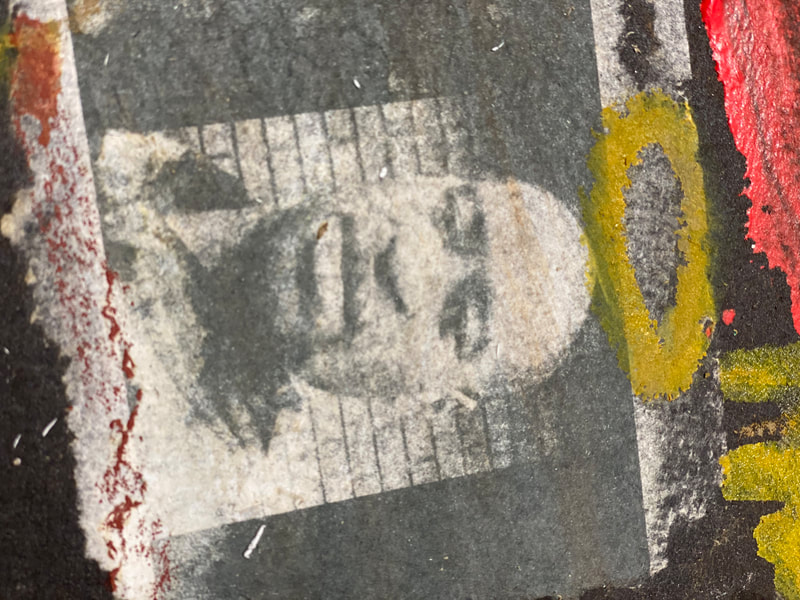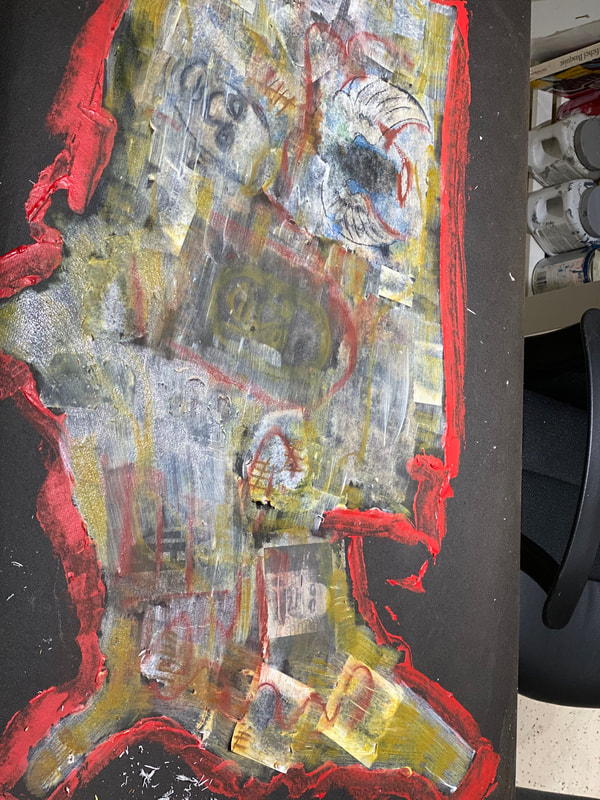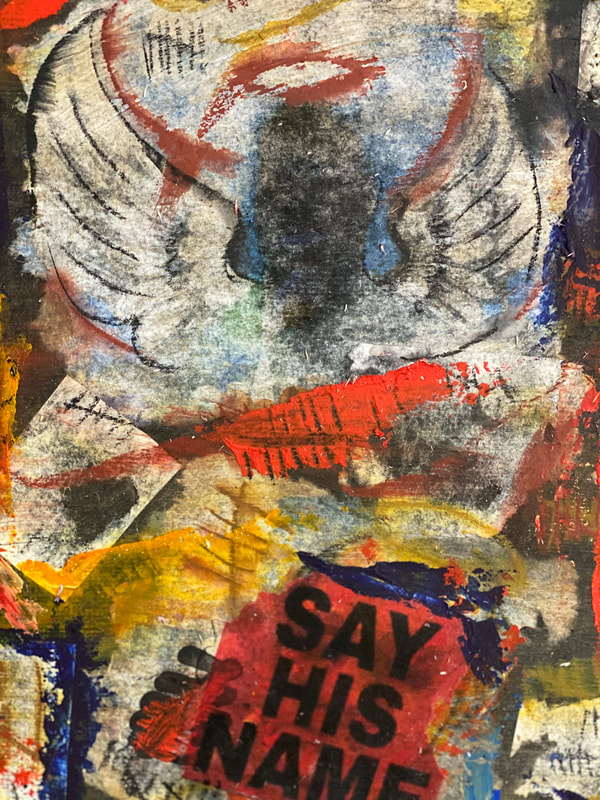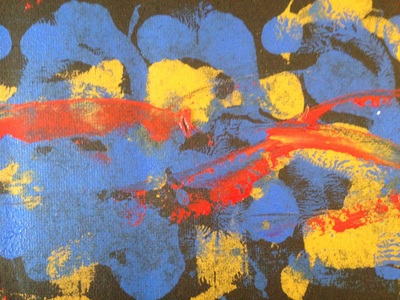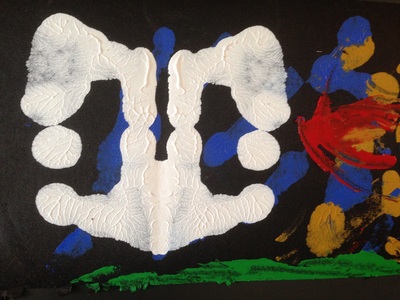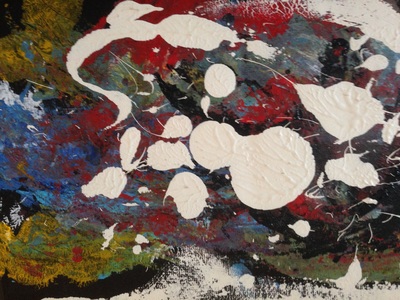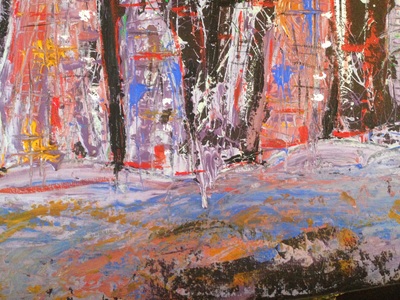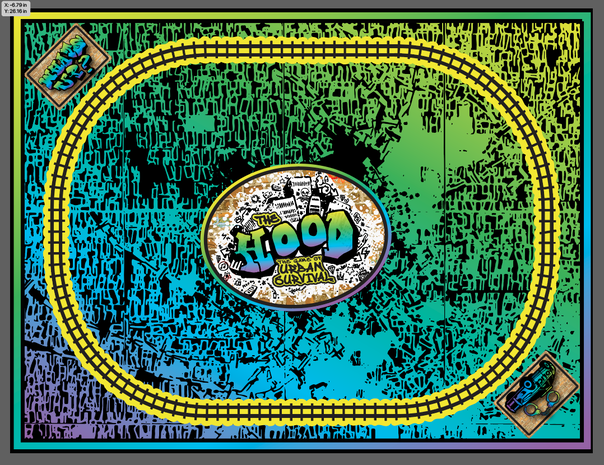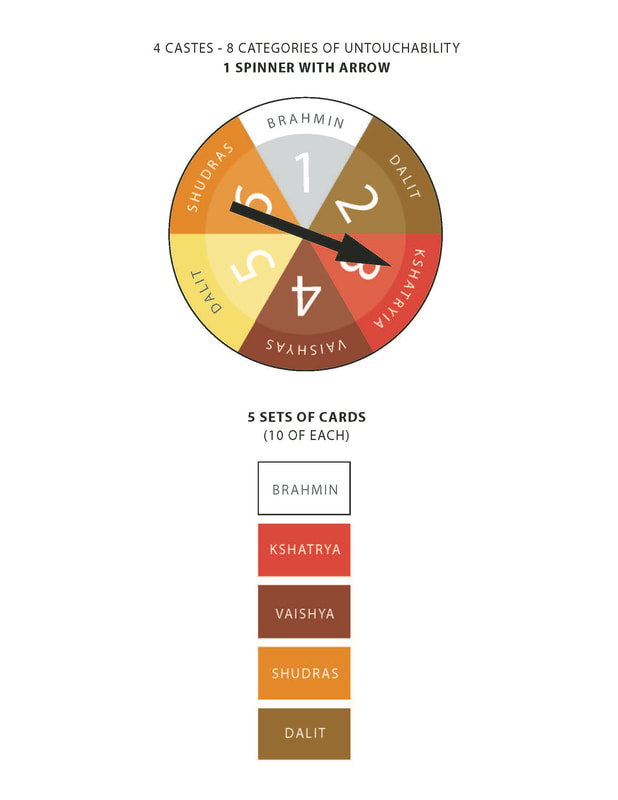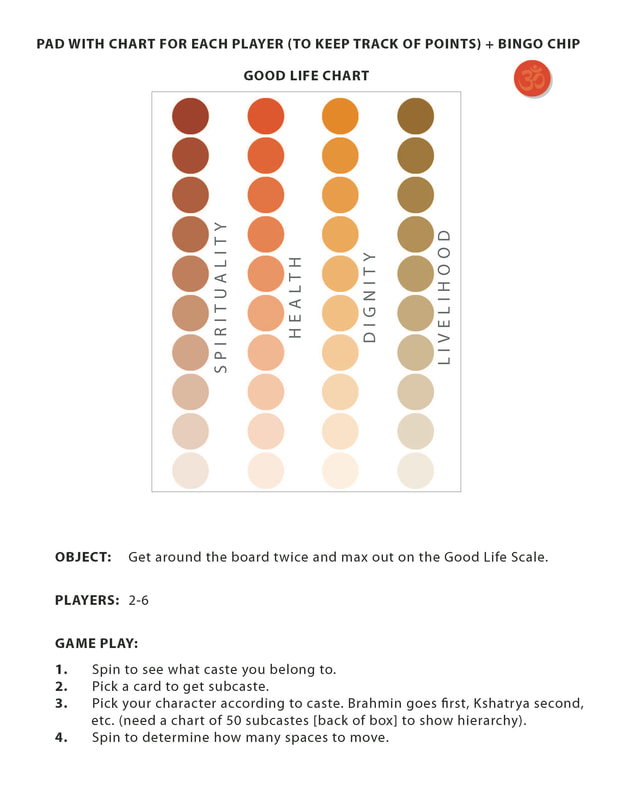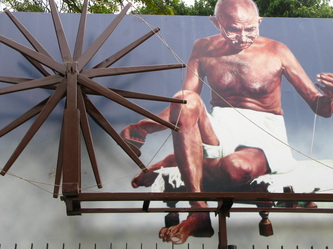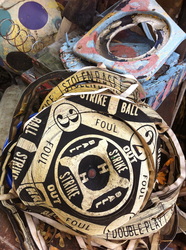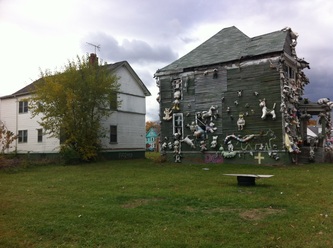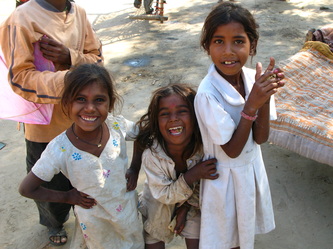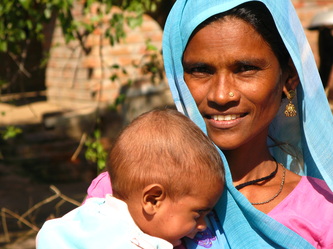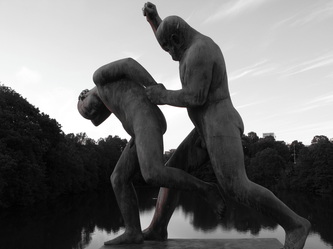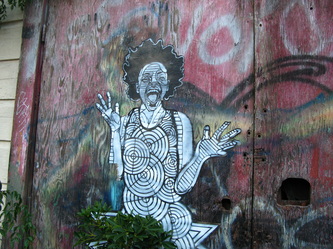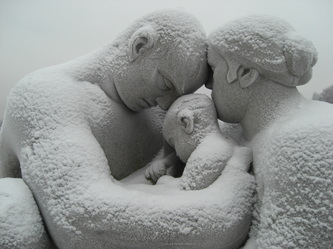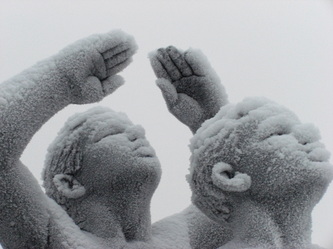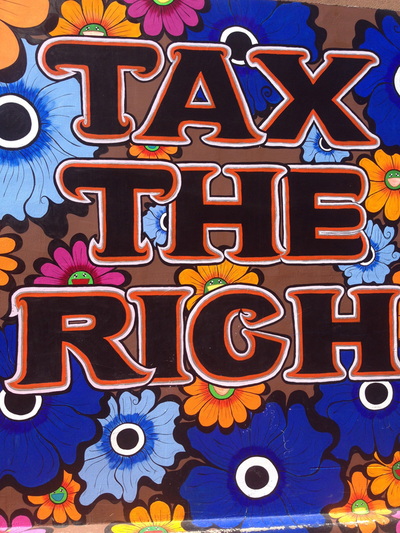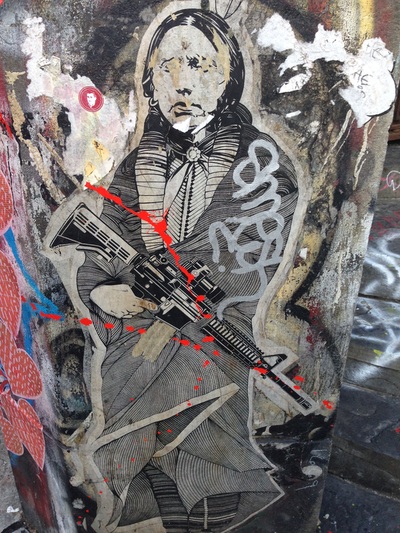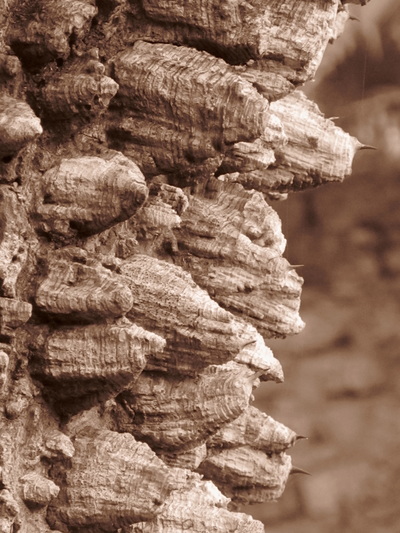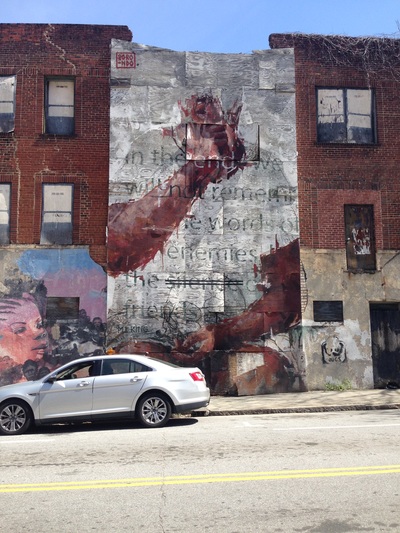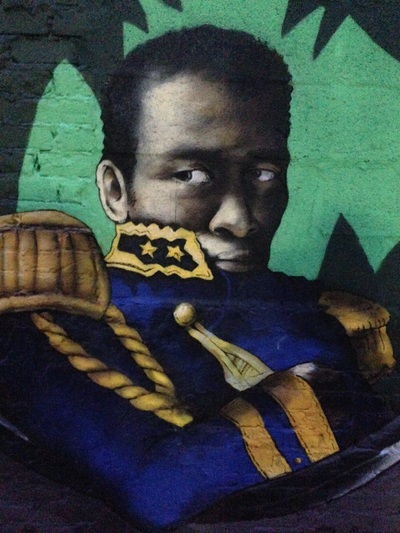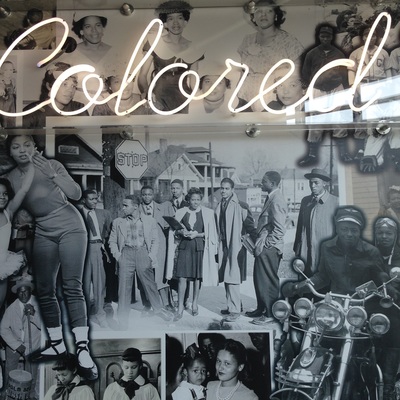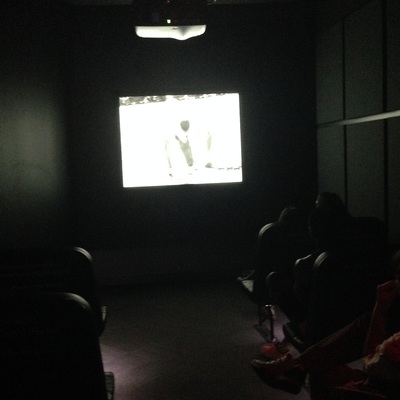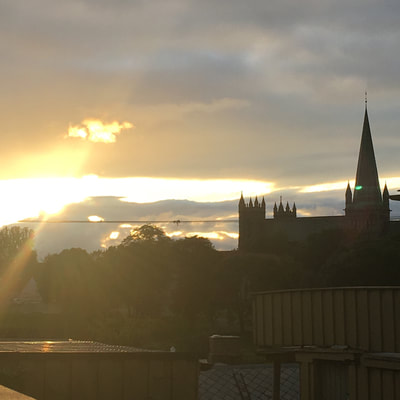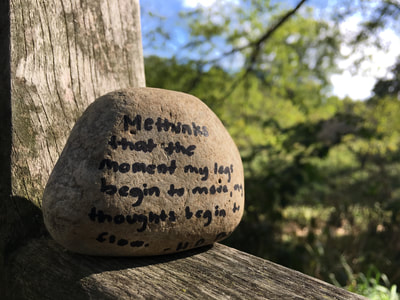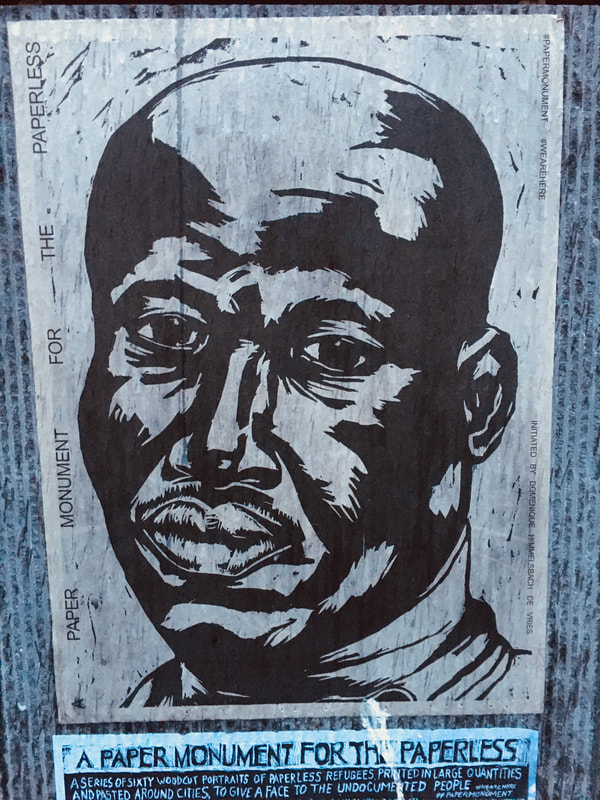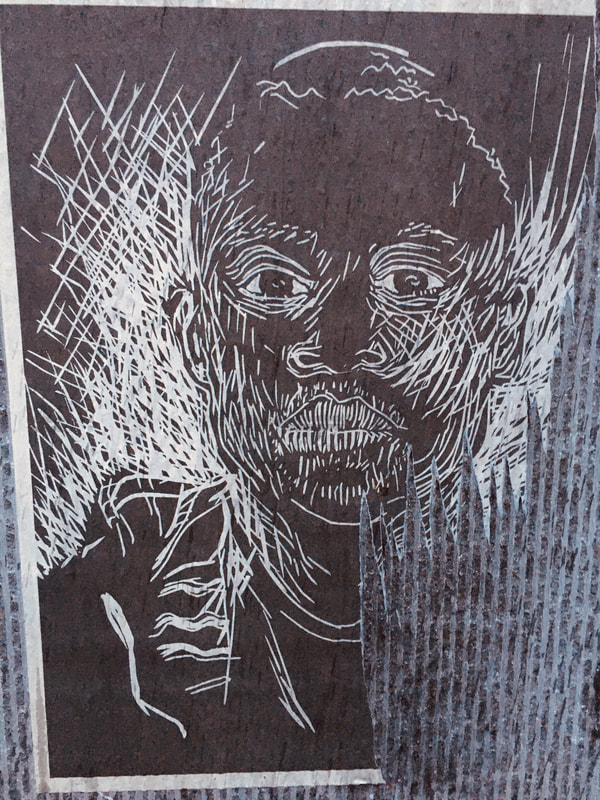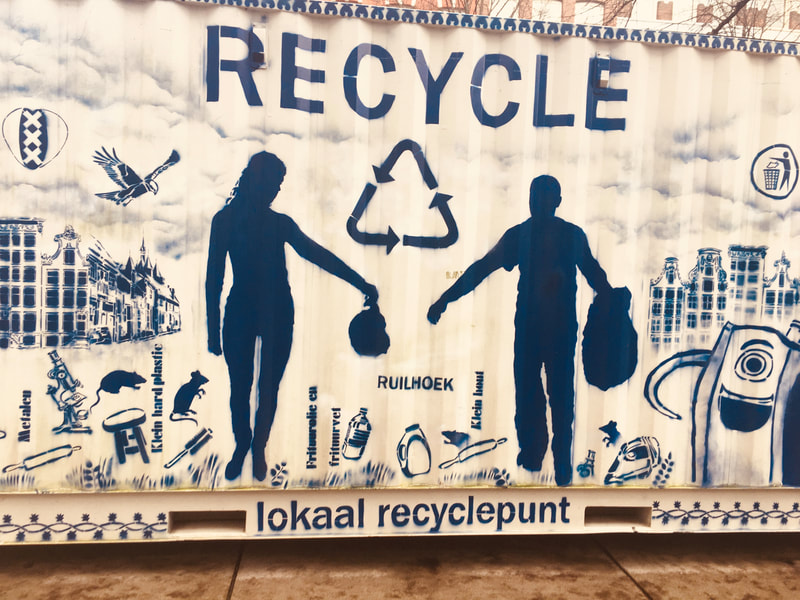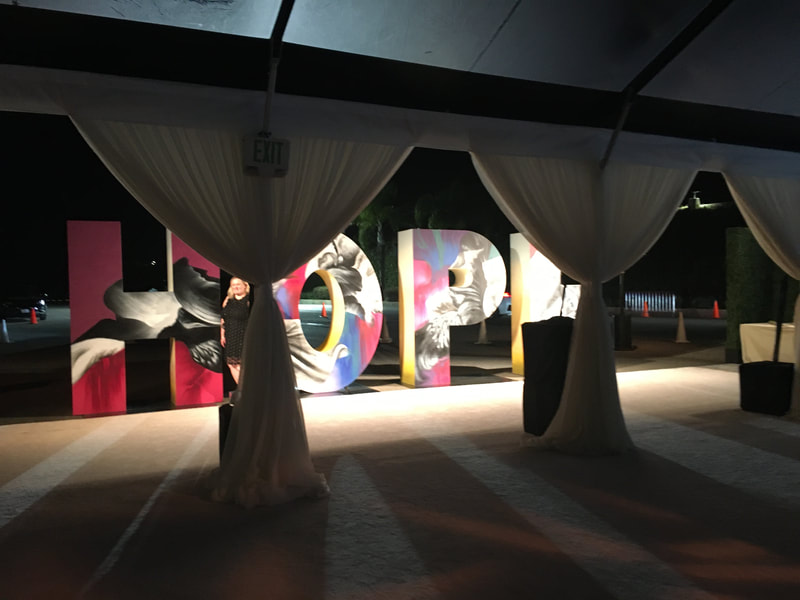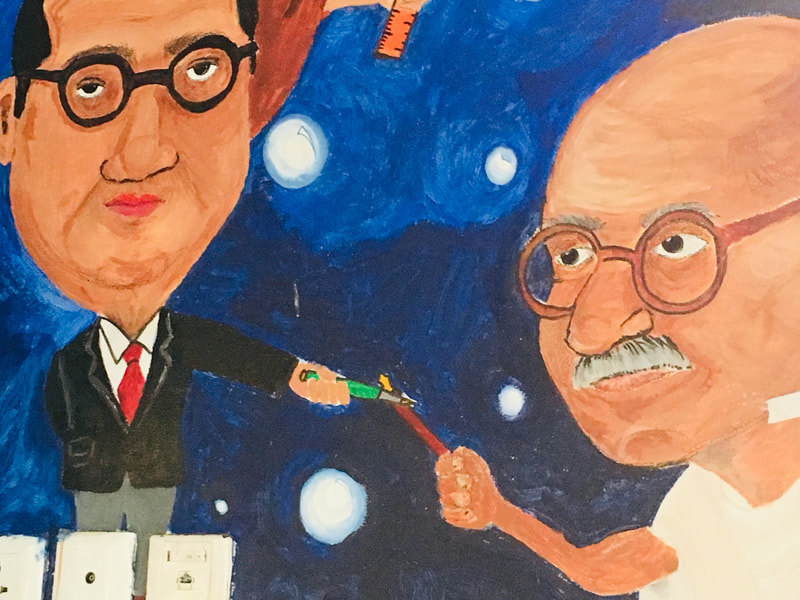INtroduction
Most of my professional interests revolve around trying to understand what political conflict/violence is, what accounts for its varied form, how to stop it as well as trying to understand what impact political violence has on our lives and exploring the relationship between those engaged in change-making (social movements) and those engaged in protecting the status quo (repression/human rights violation/protest policing/counter-insurgency). Truth be told, my personal interests reflect the same general topics but in slightly different ways. Indeed, I began to think that writing academic work was only one way to try to raise awareness of conflict, violence, survival and struggles to improve the world. There were many others. Raised by an artist (Juliet "Ndidi" Seignious), I suppose that this development was inevitable.
Graphic Images
Bookman
Working at the University of Michigan, I have seen a great many items with the now famous Michael Jordan/Nike jumpman logo on it. Indeed, sporting this gear is a big part of life at the center of "Wolverine nation". As an academic though (whose primary responsibility is the enlightenment and inspiration of young people), I have been troubled by this image and orientation. In this context, with my collaborator Matthew Bremer, I began to reflect on, criticize, modify and play with the image to be something more appropriate for an institution of higher learning. From this effort, bookman was born. I will likely change this to bookperson at some point. I'm now working on incorporating this idea/image/character into a novel I had written years ago about someone who obtained "the book that never closes" while seeking to bring about political, economic and social change.
Paintings
When one spends any time around an artist, they are either left in awe, prompted to experiment or both. On a recent visitation with my mother, I began to put paint to canvas or in this specific case acrylic to tarpaper. Surrounded by details of the recent police-citizen confrontations surrounding police brutality and the "Black Lives Matter" as well as the broader context of such interactions taking place throughout the world, I began to think about the interaction between police and protestors - not in the largely analytic way that I do in my written work. Rather, I attempted to explore it as an emotion, as an expression, using colors and the movement of the palette knife to capture what occurred to me as I reflected on the twenty years I have spent thinking about such matters.
The United States of Floyd
States vs. Challengers
Images from Gallery Show - Protest and Resistance: The Art of Revolution
Additional Paintings: Shapes & Sounds
Writing
To date, I have written a novel (which was published but had a limited circulation), a toolkit/book for parents-children, a children's story and a compilation of short stories.
The Talks

Watching the protests, I wonder what should be to told to a child about what is and has been going on out in the streets of the United States. In the black community this is often referred to as “the talk” but this is somewhat inaccurate in my view because this is not one talk that is given but rather it is several of them and there is not likely one approach taken but several. This book presents some tools to assist in facilitating this conversation. Many of the images come from my mother. The designs and some of the art come from Matthew Bremer.
BE and the Movements in Stasis

The novel is about how BE (the lead character) goes around mythical Stasis in order to bring about socio-political change. To do this, BE interacts with a variety of interesting changemakers.
The stories are largely based on my interactions with activists and social movements around the world between 1992-2002, but all names and locales have been changed to protect the innocent, the not-so-innocent and myself (who lies somewhere in between the two).
Recently asked for a description of the book, this is what I came up with:
When trying to think about how to describe Be & the Movements in Stasis, one image came to mind:
The TV show Kung Fu (with David Carradine) meets A Huey P. Newton Story meets the Confederacy of Dunces meets the Hitchhikers Guide to the Galaxy meets the Invisible Man meets Napoleon Dynamite – not necessarily in this order. Ok, this probably does and does not help but it was the most useful image as well as the first one that occurred to me. In this novel, BE – a naïve but committed pseudo-revolutionary trying to find a way, wanders around mythical Stasis (not the United States) finding diverse individuals
and groups engaged in social change. For example, BE meets Epiphany Jones – an ingenious political leader with a million ideas, two million problems, one competent assistant, a fantastic message/ideology/plan of action but no way to deliver it; Backhed – a closet philosopher, janitor and
general support system for the House of the Overly Charitable, with a hand on the pulse of the movement,
a hand on their genitals and a wrench on a pipe, whose life was so fast-paced that the “a” didn’t even have
a chance to get into the name; and Gdot and Gdont – two larger than life nomadic activists with all the
answers but stuck in the middle of nowhere looking for a meeting that might never take place or that took
place 3-6 months ago.
The book progresses through 5 different encounters between BE and the Movements. Across each
encounter BE confronts new crises, personalities, dynamics but old problems with three weapons: wit,
commitment and The Book that Never Closes – an invaluable source of information constantly referenced
by BE which was put together by an insane political science professor (not based on the author) who could
no longer figure out what to do but who was wise enough to put everything that one could ever need to
know about social change in one, large, incoherent manuscript.
The stories are largely based on my interactions with activists and social movements around the world between 1992-2002, but all names and locales have been changed to protect the innocent, the not-so-innocent and myself (who lies somewhere in between the two).
Recently asked for a description of the book, this is what I came up with:
When trying to think about how to describe Be & the Movements in Stasis, one image came to mind:
The TV show Kung Fu (with David Carradine) meets A Huey P. Newton Story meets the Confederacy of Dunces meets the Hitchhikers Guide to the Galaxy meets the Invisible Man meets Napoleon Dynamite – not necessarily in this order. Ok, this probably does and does not help but it was the most useful image as well as the first one that occurred to me. In this novel, BE – a naïve but committed pseudo-revolutionary trying to find a way, wanders around mythical Stasis (not the United States) finding diverse individuals
and groups engaged in social change. For example, BE meets Epiphany Jones – an ingenious political leader with a million ideas, two million problems, one competent assistant, a fantastic message/ideology/plan of action but no way to deliver it; Backhed – a closet philosopher, janitor and
general support system for the House of the Overly Charitable, with a hand on the pulse of the movement,
a hand on their genitals and a wrench on a pipe, whose life was so fast-paced that the “a” didn’t even have
a chance to get into the name; and Gdot and Gdont – two larger than life nomadic activists with all the
answers but stuck in the middle of nowhere looking for a meeting that might never take place or that took
place 3-6 months ago.
The book progresses through 5 different encounters between BE and the Movements. Across each
encounter BE confronts new crises, personalities, dynamics but old problems with three weapons: wit,
commitment and The Book that Never Closes – an invaluable source of information constantly referenced
by BE which was put together by an insane political science professor (not based on the author) who could
no longer figure out what to do but who was wise enough to put everything that one could ever need to
know about social change in one, large, incoherent manuscript.
Breaking Monotony
The children’s story is the tale of a little boy who must either find out the rules of a game that he and his classmates are forced to play in school or how to get out of it. This dilemma forces him to consult his family on alternative strategies of protest as well as get help from his best friend (Kysha) and numerous others. I wrote the story and original illustrations were created by Juliet Seignious (the image above), my mom.
Traveling in Black and White
My first book of non-fiction ( began as a series of short stories about what I encountered traveling around the world studying political violence and discrimination - not just as an African American but because I am an African American. None of the publishers seemed to like this though and they kept asking for the standard narrative arc and a more conventional story. Well, I ditched my stories on India, Northern Ireland and Norway for a more focused treatment on Rwandan political violence during 1994 as well as "conversations" I had with my grandmother/mother about these experiences. One of the original stories is provided below:
Excerpt - The Made Niggaz's (Hair) Saloon
This inevitably morphed into my comic with Darick Ritter.
Excerpt - The Made Niggaz's (Hair) Saloon
This inevitably morphed into my comic with Darick Ritter.
Notes from the Borough
A second book of short stories is about growing up in New York city. There are four sections: the first part deals with living uptown with my mother (103rd and Central Park); the second part deals with living downtown with my father (24th and 2nd); the third part of the book deals with my returning to different parts of the city after I moved away; the final part deals with my moving to the upper Eastside (64th and 3rd) when I returned to New York for a year as a Visiting Scholar at the Russell Sage Foundation. One of the original stories is provided below:
Excerpt - Evil and the Supermoms
Excerpt - Evil and the Supermoms
Gaming

Thus far, I have created three games and started several others
1) The Hood: the Game of Urban Survival. Developed in order to engage kids in Shape Cultural Center and youth in a detention center in Houston, Texas, this game involves traversing three neighborhoods in some city. Each neighborhood is filled with the normal everyday issues involved in such an environment (crime, work, social services, drugs, clubbing and the police). Redesigning this (as discussed below).
2) Power to the People: Social Movements and Social Control. This game was developed to engage the same youth identified above and later students at the Universities of Houston, Colorado and Maryland, the second game involves the dynamic between political authorities and social movements (yet again).
3) Understanding Untouchability. After working on Indian untouchability for a few years, I struggled with how to communicate what I learned to others. In this context, Ibegan working on a board game to reveal what was involved. The board, provided above at the beginning of this section, was created by my friend and fabulous artist - Christina Rannacher (she also designed the cover for my book: Media Bias, Perspective and State Repression.
In addition to the three noted above, I briefly worked on a game called The Gospel Truth with Elaine Pagels (renowned religious scholar from Princeton University). This involved individuals creating and attempting to distribute their own gospels. We will never “finish” it but the process was truly fun.
Finally, inspired by recent events in the Occupy-De/Occupy movements, the Arab Spring as well as Black Lives Matter, I am in the process of developing a new game about government-challenger standoffs: Repression & Revolution. Still working out the details.
1) The Hood: the Game of Urban Survival. Developed in order to engage kids in Shape Cultural Center and youth in a detention center in Houston, Texas, this game involves traversing three neighborhoods in some city. Each neighborhood is filled with the normal everyday issues involved in such an environment (crime, work, social services, drugs, clubbing and the police). Redesigning this (as discussed below).
2) Power to the People: Social Movements and Social Control. This game was developed to engage the same youth identified above and later students at the Universities of Houston, Colorado and Maryland, the second game involves the dynamic between political authorities and social movements (yet again).
3) Understanding Untouchability. After working on Indian untouchability for a few years, I struggled with how to communicate what I learned to others. In this context, Ibegan working on a board game to reveal what was involved. The board, provided above at the beginning of this section, was created by my friend and fabulous artist - Christina Rannacher (she also designed the cover for my book: Media Bias, Perspective and State Repression.
In addition to the three noted above, I briefly worked on a game called The Gospel Truth with Elaine Pagels (renowned religious scholar from Princeton University). This involved individuals creating and attempting to distribute their own gospels. We will never “finish” it but the process was truly fun.
Finally, inspired by recent events in the Occupy-De/Occupy movements, the Arab Spring as well as Black Lives Matter, I am in the process of developing a new game about government-challenger standoffs: Repression & Revolution. Still working out the details.
The Hood
Created in the early 1990s, The Hood: the Game of Urban Survival is a fun and imaginative way to explore the world of inner city life. Within it you will examine: 1) school and the value of an education to one whose opportunities are minimal and whose needs are great, 2) crime, drugs and violence, 3) the role and purpose of gangs, 4) the functions of various organizations and places within the urban community (i.e., churches, cultural centers, barber shops), 5) police-citizens relations, 6) (un)employment and welfare, 7) sex (both safe and unsafe), 8) personal factors (street knowledge, strength, verbal skills, etc.), and 9) that ever present random element that either reorients or disorients one’s life. Along with Matthew Bremer, I am finally redesigning the game and trying to get it distributed. I have now played the game in homes, cultural centers as well as detention centers throughout America.
To play
Perform specific tasks relevant to different spaces on the board
Oh, and don't forget to balance the following characteristics
To play
- select a goal:
- be the first to go around the board and survive;
- make the most money;
- develop the neighborhood by eliminating crackhouses and bars as well as creating businesses and cashing in on ideas/inventions
- or, do all three at the same time
- be the first to go around the board and survive;
- walk, or
- ride the subway.
Perform specific tasks relevant to different spaces on the board
- go to school
- buy/sell/avoid drugs
- hang out with friends
- create and invest in ideas and inventions
- go to work
- go dancing at a nightclub
- interact with police
- go shopping
- go to church/mosque/temple
- go to the barber
- and much more
Oh, and don't forget to balance the following characteristics
- life – your overall health; you can die in the game
- sanity – your overall mental stability; if it gets too low, you could make some bad decisions
- strength – your stamina and ability to fight
- charisma – your charm and capacity to influence people
- book knowledge – your overall intelligence in terms of the law, politics and economics
- street knowledge – your ability to understand the basic dynamics of the Hood
Understanding Untouchability
OBJECT: Get around the board twice and max out on the Good Life Scale.
PLAYERS: 2-6
GAME PLAY:
At your turn, spin to determine how many spaces to move. e.g. land on RED (SPIRITUALITY/RELIGION) SQUARE, pick a RELIGION CARD it says “PRASAD” and has the definition of prasad at the top, underneath you are told how to
proceed (or not) based upon your caste.
You may also land on an EXPERIENCE square, e.g . Barber Shop, Temple, School, Town Square, Well, Police Station, Funeral, Office, Pharmacy, etc. Pick an EXPERIENCE card; you will be told how to you can participate in this experience (or not) based upon your caste.
PLAYERS: 2-6
GAME PLAY:
- Spin to see what caste you belong to.
- Pick a card to get subcaste.
- Pick your character according to caste. Brahmin goes first, Kshatriya second, etc.
- Spin to determine how many spaces to move.
At your turn, spin to determine how many spaces to move. e.g. land on RED (SPIRITUALITY/RELIGION) SQUARE, pick a RELIGION CARD it says “PRASAD” and has the definition of prasad at the top, underneath you are told how to
proceed (or not) based upon your caste.
You may also land on an EXPERIENCE square, e.g . Barber Shop, Temple, School, Town Square, Well, Police Station, Funeral, Office, Pharmacy, etc. Pick an EXPERIENCE card; you will be told how to you can participate in this experience (or not) based upon your caste.














